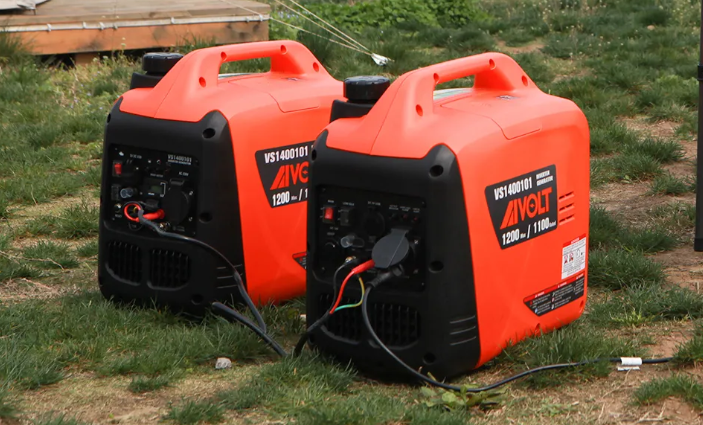When you need backup or portable power, choosing between a standard generator and an inverter generator can feel confusing. While both produce electricity, their design, power quality, and use cases differ drastically. Below’s a clear breakdown of their key differences to help you pick the right one.
1. Core Working Principle: How They Produce Electricity
The biggest gap starts with how each generates power—this directly impacts performance and compatibility.
Standard Generator
It works in a simple, direct way: A fuel-powered engine (gasoline, propane, or diesel) spins an alternator to produce raw AC power (alternating current) at around 120V or 240V. This power is sent straight to outlets with little processing. The engine’s speed is fixed (usually 3600 RPM) to maintain a steady 60Hz frequency, even when the load is light—meaning it uses the same fuel and makes the same noise whether it’s powering a phone or a fridge.
Inverter Generator
It adds a critical “inversion” step: The engine first generates raw AC power, then converts it to DC power (direct current) via a rectifier. A built-in inverter then “cleans up” the DC power to produce stable, high-quality AC power. Unlike standard generators, its engine speed adjusts with the load—slowing down when power needs are low (e.g., charging a phone) and speeding up for heavier loads (e.g., running a microwave).
2. Power Quality: Clean vs. Raw Electricity
Power quality matters most for sensitive electronics—this is where inverter generators shine.
Standard Generator
The raw AC power it produces has high Total Harmonic Distortion (THD), usually between 10% and 20%. THD measures how much the power waveform deviates from a perfect sine wave; high THD can damage devices like laptops, smartphones, cameras, or medical equipment (e.g., CPAP machines). It’s safe only for “tough” appliances like space heaters, power tools, or old-style refrigerators that don’t rely on delicate electronics.
Inverter Generator
Its inverted power has THD below 5% (often as low as 1%-3%), meeting the “clean power” standard for sensitive gear. This means you can safely plug in laptops, TVs, drones, or even portable medical devices without risking burnout or data loss. For anyone using modern electronics, this is a non-negotiable advantage.
3. Fuel Efficiency & Noise Level: Save Money, Avoid Disturbance
Daily use factors like fuel cost and noise make a big difference for home or outdoor use.
Standard Generator
- Fuel efficiency: Poor. Since the engine runs at a fixed speed, it burns fuel at a constant rate—even when powering small devices. A 5000W standard generator might use 0.8 gallons of gasoline per hour, even if it’s only charging a phone.
- Noise level: Loud. Fixed high engine speed creates 70-90 decibels (dB)—about as loud as a lawnmower or a busy street. This makes it unsuitable for campsites, residential areas, or nighttime use (neighbors will complain!).
Inverter Generator
- Fuel efficiency: Excellent. Variable engine speed means it uses fuel only when needed. A 2000W inverter generator might use just 0.2 gallons per hour for phone charging, and 0.6 gallons per hour for a microwave. It can run 2-3 times longer on a single tank than a standard generator of similar size.
- Noise level: Quiet. At low loads, it runs at just 50-60 dB—like a normal conversation. Even at full load, it stays below 70 dB. This makes it ideal for camping, backyard events, or residential backup power.
5. Which One Should You Choose?
- Pick a standard generator if: You need high power (7000W+) for heavy tools (e.g., construction) or large appliances (e.g., whole-house heating), and noise/fuel cost aren’t major concerns.
- Pick an inverter generator if: You need clean power for electronics, portability for camping/RVs, quiet operation for residential areas, or want to save on fuel long-term.
In short, standard generators are “workhorses” for heavy, non-sensitive loads, while inverter generators are “smart, efficient choices” for modern, on-the-go power needs.

